
Sierra Leone, officially the Republic of Sierra Leone, informally Salone, is a country on the southwest coast of West Africa. It has a tropical climate, with a diverse environment ranging from savanna to rainforests. The country has a total area of 71,740 km2 (27,699 sq mi) and a population of 7,075,641 as of the 2015 census. Sierra Leone is a constitutional republic with a directly elected president and a unicameral legislature. The country's capital and largest city is Freetown. Sierra Leone is made up of five administrative regions: the Northern Province, North West Province, Eastern Province, Southern Province and the Western Area. These regions are subdivided into sixteen districts.

Sierra Leone's music is a mixture of native, French, British, West Indian and Creole musical genres.

The music of Mexico is very diverse and features a wide range of musical genres and performance styles. It has been influenced by a variety of cultures, most notably the culture of the indigenous peoples of Mexico and Europe. Music was an expression of Mexican nationalism, beginning in the nineteenth century.
"Bésame Mucho" is a song written in 1940 by Mexican songwriter Consuelo Velázquez. A famous version is sung by Trio Los Panchos.
Latin rock is a term to describe a music subgenre consisting in melting traditional sounds and elements of Latin American and Caribbean folk with rock music. However, it is widely used in the English-language media to refer any kind of rock music featuring Spanish or Portuguese vocals. This fact lead into a controversy about the scope of the terminology.
Guillermo Gómez-Peña is a Chicano performance artist, writer, activist, and educator. Gómez-Peña has created work in multiple media, including performance art, experimental radio, video, photography and installation art. His ten books include essays, experimental poetry, performance scripts and chronicles in both English, Spanish and Spanglish. He is a founding member of the art collective Border Arts Workshop/Taller de Arte Fronterizo and director of the performance art troupe La Pocha Nostra.
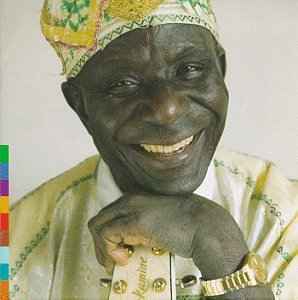
Dead Men Don't Smoke Marijuana is the final album by Sierra Leonean highlife and palm-wine musician S. E. Rogie, recorded at Real World Studios, Wiltshire, England, in 1993–94 and released in May 1994 by Real World Records. Production was carried out by American producer Tchad Blake, who worked in an intimate fashion. In addition to Rogie's three-piece backing band, the album also features the English double bassist Danny Thompson and guitarist Alfred Bannerman. The album is characteristic of Rogie's palm-wine material, with his syncopated folk songs, finger-picked acoustic guitar playing style, sulky baritone vocals, often in the Krio language, and African call-and-response vocals.

Arroyo Seco is a town in Arroyo Seco Municipality located in the far north of the Mexican state of Querétaro. Its territory is part of the Sierra Gorda Biosphere Reserve of Querétaro. The municipality is centered on the small town of Arroyo Seco, which was established as a military outpost then given town status in 1833 under the name of Villa de Guadalupe before changing to its current name. The town gained municipal status in 1931. The area is very rural with most people living in communities of under 100 people, with significant Pame communities. It has a traditional economy based on agriculture, livestock and forestry but it is also one of the poorest in Mexico, with high rates of emigration, especially sending migrant workers to the United States. It is estimated that one in four households in the municipality receives money from family members in this country. The municipality is also home to one of five Franciscan mission complexes built under the tenure of Junípero Serra, located in the community of Concá.
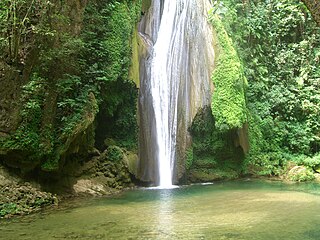
The Sierra Gorda is an ecological region centered on the northern third of the Mexican state of Querétaro and extending into the neighboring states of Guanajuato, Hidalgo and San Luis Potosí. Within Querétaro, the ecosystem extends from the center of the state starting in parts of San Joaquín and Cadereyta de Montes municipalities and covering all of the municipalities of Peñamiller, Pinal de Amoles, Jalpan de Serra, Landa de Matamoros and Arroyo Seco, for a total of 250 km2 of territory. The area is extremely rugged with high steep mountains and deep canyons. As part of the Huasteca Karst, it also contains many formations due to erosion of limestone, especially pit caves known locally as sótanos. The area is valued for its very wide diversity of plant and animal life, which is due to the various microenvironments created by the ruggedness of the terrain and wide variation in rainfall. This is due to the mountains’ blocking of moisture coming in from the Gulf of Mexico, which generally makes the east side fairly moist and the west semiarid scrub brush. Most of the region has been protected in two biosphere reserves, with the one centered in Querétaro established in 1997 and the one centered in Guanajuato established in 2007. The Sierra Gorda is considered to be the far west of the La Huasteca region culturally and it is home to the Franciscan Missions in the Sierra Gorda World Heritage Site.

The wildlife of Sierra Leone is very diverse due to the variety of different habitats within the country. Sierra Leone is home to approximately 2090 known higher plant species, 147 known species of mammals, 172 known breeding bird species, 67 known reptile species, 35 known amphibian species and 99 known species of fish.

The Festival Internacional Cervantino (FIC), popularly known as El Cervantino, is a festival which takes place each fall in the city of Guanajuato, located in central Mexico.

Sierra Leone's Refugee All Stars is a band from Sierra Leone which was formed by a group of refugees displaced to Guinea during the Sierra Leone Civil War. Since their return to Freetown in 2004, the band has toured extensively to raise awareness for humanitarian causes. Their story is documented in the 2005 documentary film Sierra Leone's Refugee All Stars.
The Festival Rock y Ruedas de Avándaro was a historic Mexican rock festival held on September 11–12, 1971, on the shores of Lake Avándaro near the Avándaro Golf Club, in a hamlet called Tenantongo, near the town of Valle de Bravo in the central State of Mexico. The festival, organized by brothers Eduardo and Alfonso Lopez Negrete's company Promotora Go, McCann Erickson executive and sports promoter Justino Compean and Telesistema Mexicano producer Luis de Llano Macedo, took place at the height of La Onda and celebrated life, youth, ecology, music, peace and free love, has been compared to the American Woodstock festival for its psychedelic music, counterculture imagery and artwork, and open drug use. A milestone in the history of Mexican rock music, the festival has drawn anywhere from an estimated 100,000 to 500,000 concertgoers.

Atengo is both a small village and municipality of the region Sierra de Amula in the Mexican state Jalisco.

Lake Sonfon, also known as Lake Confon, is a fresh water mountain lake in Diang, Sierra Leone of religious and cultural significance. The nearest towns are Kabala that is 60 km to the north and Benugu that is 40 km to the south. It is located in the hills of the Sula Mountains at an altitude of 549 m (1,801 ft) above sea level. Sonfon drains from its southern end, which forms the start of the Pampana River, and is fed by seven small streams with its water level varying considerably during the year. The Lake has a maximum depth of 8 m (26 ft) and with an area of 8.2 km2 (3.2 sq mi) is Sierra Leone's largest inland lake.
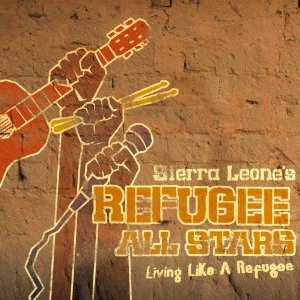
Living Like a Refugee is the debut album from Sierra Leonian band Sierra Leone's Refugee All Stars, released in the Europe on 25 September 2006 and in the United States on 26 September 2006.
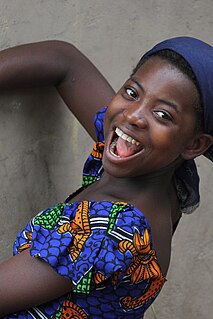
Sierra Leone, officially the Republic of Sierra Leone, is a Constitutional Republic in West Africa. Since it was founded in 1787, the women in Sierra Leone have been a major influence in the political and economic development of the nation.

Los Barriles is a town in La Paz Municipality, Baja California Sur, Mexico. It is situated along Highway 1, 40 miles (64 km) north of San José del Cabo and 65 miles (105 km) south of La Paz. Punta Pescadero Airstrip is 9 miles (14 km) to the north; Rancho Leonero, a vacation resort, is to the south. Adjacent to Buena Vista, the rural towns straddle the head of Bahía las Palmas on the Gulf of California, where winter westerlies average 20–25 knots. Los Barriles is within the transition area of the Baja California peninsula's Sierra de la Laguna where the hills become sandy flats.
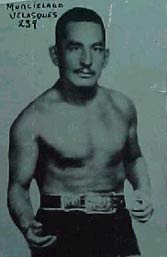
Jesús Velázquez Quintero, better known under the ring names El Murciélago Enmascarado and Murciélago Velázquez, was a Mexican luchador or professional wrestler who was active from 1938 until 1956. Velázquez was the fourth wrestler in Mexico to wear a wrestling mask and the second Mexican to work as an enmascarado in the history of lucha libre. He became the first wrestler in Mexico to be forced to unmask, losing a lucha de apuestas, or "Bet match" to Octavio Gaona, creating the most prestigious match type in lucha libre. He once held the Mexican National Middleweight Championship and after his retirement was the head of the Mexico City boxing and wrestling commission for a while.















